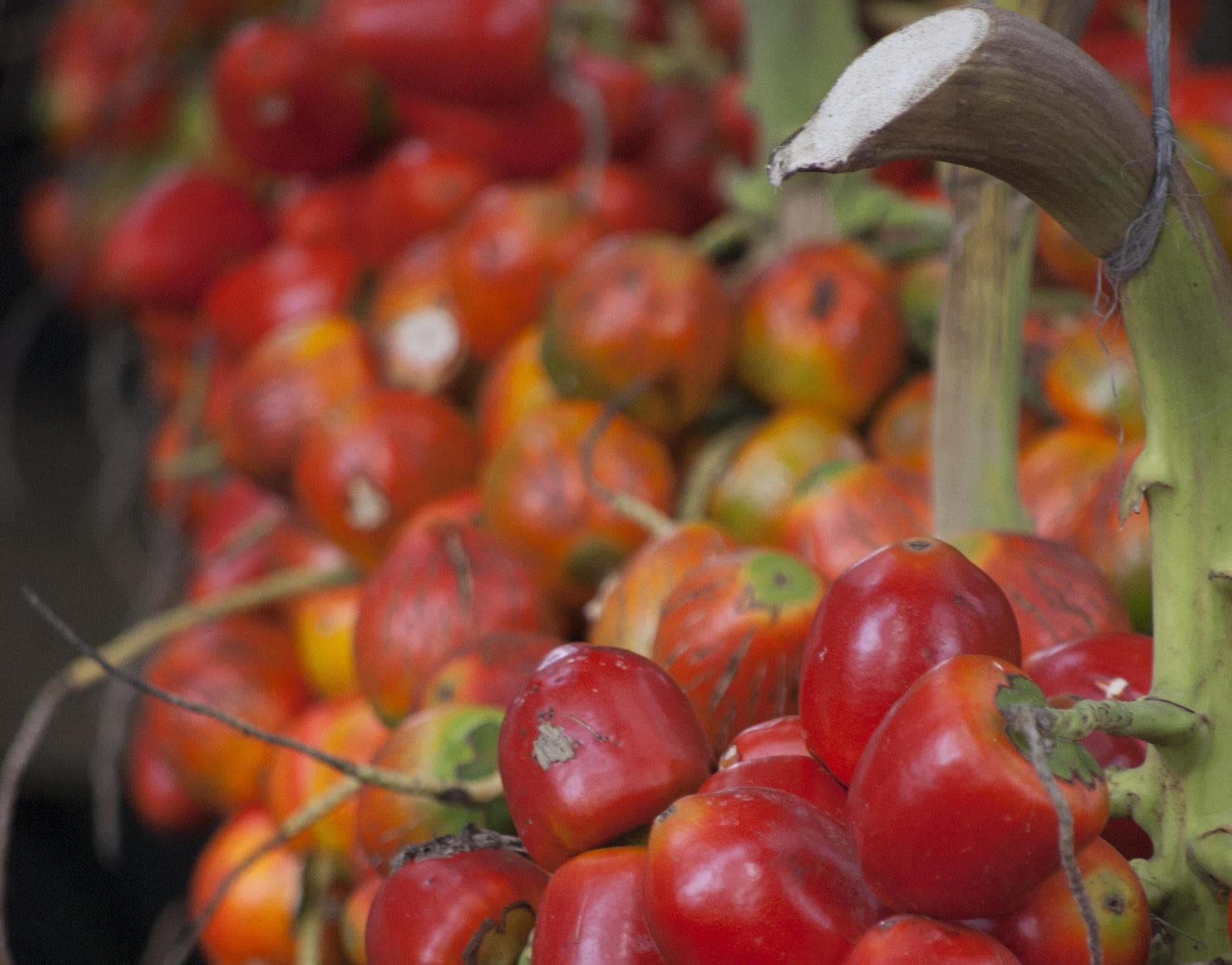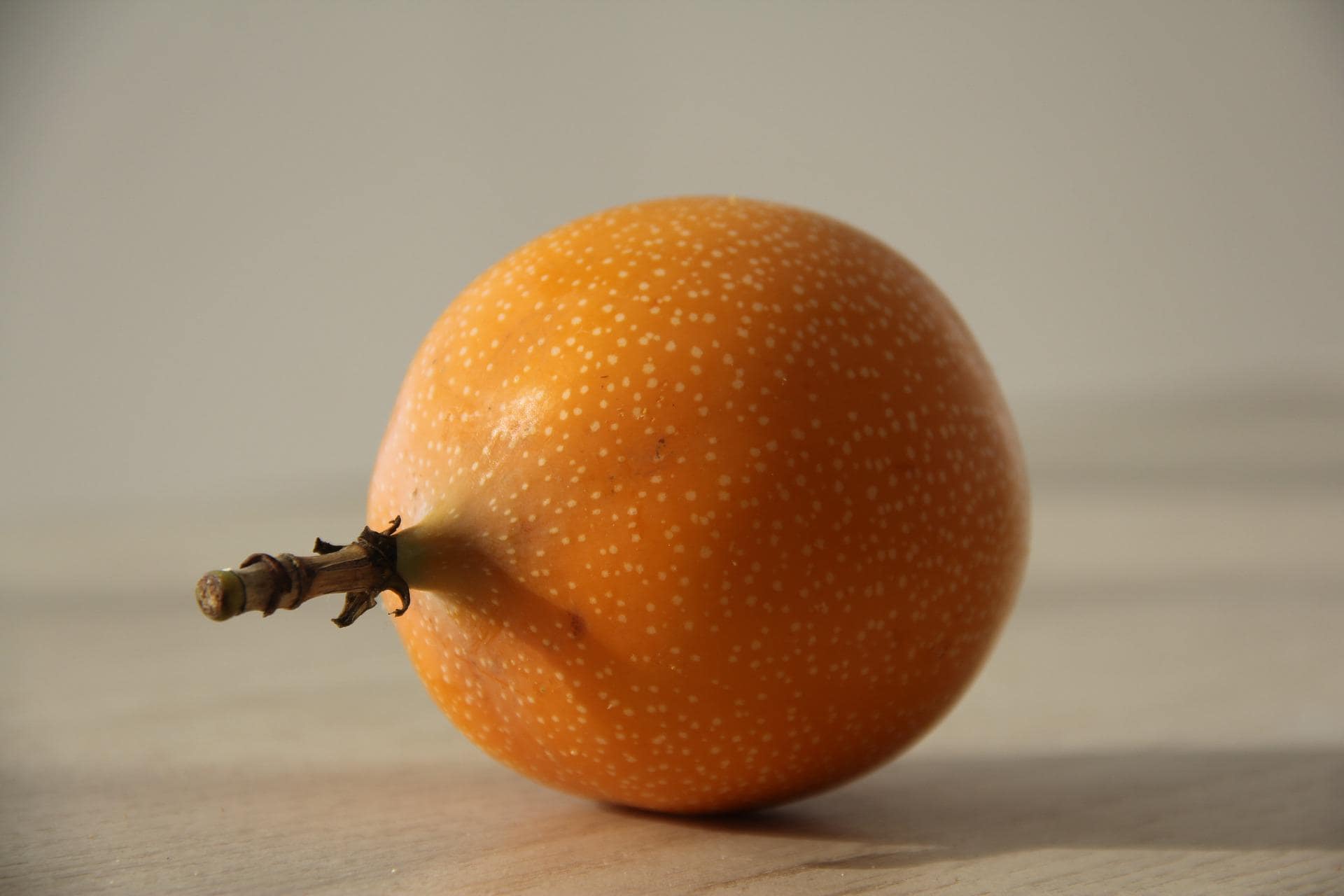In our experience, food is one of the greatest and most enjoyable features of travel. And if you’re anything like us – from a casual taster to full-on foodie – then you’re going to love all the Costa Rica tropical fruits that are in store!
Keep in mind that Costa Rican fruits are highly seasonal and, despite how small our country is, fruit seasons do vary by region. So, while you may hear about dozens of fruits you’d like to try, know that only a third to a quarter of them will be available in a single region, at any given time.
The only solution: Visit again. And again. And again! Until you’ve hit on all the seasons and sampled all the Costa Rica tropical fruits. And now, a few of our favorites to add to your list:
-
Jocote (Red Mombin)
Also known as purple mombin and hog plum – so appetizing, we know! – jocote (pronounced hoe-coe-tay) are a cousin of the cashew (who knew?!) and one of Costa Rica’s favorite fruits!
Jocotes may be eaten either green (unripe), pintones (partially ripe), or ripe. You’ll know which you’re getting because green jocotes are, quite literally, green; ripe jocotes, on the other hand, slowly transition from green to red to orange. (When they’re soft and orange, they’re at peak ripeness.)
When to Eat Jocote: High rainy season, typically July through October.
How to Eat Jocote: If you’re sampling green jocotes, cut them open and add a squeeze of lemon juice and a bit of salt. Going for ripe jocotes? Eat them as they are, just avoid the pit!
-
Guanábana (Soursop)
We swear that guánabana (pronounced gwah-nah-bah-nah) tastes like pear ice cream, if pear ice cream were a fruit! It’s sweet, it’s creamy, it’s white, and it’s heavenly… as we said, ice cream!
You can’t mistake this popular fruit, which is green and sized anywhere between a softball and an American football – only spikey! Look for one that has a bit of give (but isn’t squishy); that’s when you know you’ve found just the right ripeness.
When to Eat Guanábana: Soursop is in season almost year-round in Costa Rica so, no matter when you visit, you’ll likely find it at a farmer’s market stand. (Most vendors sell it whole or, given its size, in easier-to-handle pre-cut chunks of one to two pounds.)
How to Eat Guanábana: We’re not going to sugar-coat it; breaking down a soursop, with all its many seeds, takes a while. But, since the seeds are large and black (in contrast to the white fruit) and the skin peels away easily, it’s a fairly simple process. From there, throw into a blender with a bit of water or milk (we prefer milk, so creamy!) and enjoy it as a smoothie.
Stay Here: Sunrise 4
Tamarindo | 3 Beds | 2 Baths | Sleeps 6
A gorgeous, luxury, ocean-view penthouse located just across the street from the beach, Sunrise 4 is a retreat to wide glass doors and flowing natural light, downtown convenience and a spacious outdoor terrace.
This 3-bedroom, 2-bath condo is undeniably one of Tamarindo’s best: Located on the top floor of one of downtown’s most popular vacation rental complexes, Sunrise 4 overlooks the expansive pool and the Pacific, and puts you within steps of crashing waves. And isn’t that why you’re here? For Tamarindo, for the Pacific, and for you…
>> Inquire <<
-
Manga (Mango)
You may think you’ve had mango before, but chances are good that you haven’t had this mango. We’re talking mango so juicy, it literally runs down your chin when you bite in. Mango so sweet and velvety, it’ll make your toes curl…
Costa Rican manga is pretty close to a perfect fruit. Note that we have specified manga, not mango: In Costa Rica, mango is a wilder, often more fibrous variety, while manga (pronounced mahn-gah) is silky smooth. (There are many, many varieties, too!)
When to Eat Manga: They’re available year-round in Costa Rica but mangos really hit their peak during the dry season (think: December to May), when more varieties are available and you can buy them for as little as 25 U.S. cents per pound!
How to Eat Manga: Believe it or not, when mango is fully ripe, you can peel it (almost like a banana!). Simply cut a shallow X (about 2 inches/5 cms long) on its top end and peel. You’ll peel away a small amount of flesh but manga is cheap and this method is infinitely faster than any other. From there, simply cut away from the core – or eat like an apple!
-
Mangostán (Mangosteen)
It would barely be hyperbole to call mangostán (pronounced mahn-goe-stahn) heaven on earth. And we do mean barely. There’s almost nothing like it!
Purple and about the size of a plum – and eerily similar to caimito, or star apple, another (but not quite equal, if we’re playing favorites…) Costa Rican fruit you should try! – mangosteen is often referred to as the Queen of Fruits. That’s Queen of the World. Because as we said – heaven.
When to Eat Mangosteen: Mangosteen has a very short season in Costa Rica, usually peaking for a few weeks in the middle of the rainy season (July/August).
How to Eat Mangosteen: Grab a sharp knife and slit that baby open! You’ll reveal the inner pods, which are fleshy and white. Many of the larger pods have seeds, which you’ll want to remove. Now, eat, eat, eat!
Ibis Condo #5
Tamarindo | 2 Beds | 2 Baths | Sleeps 6
Located in a small, luxury condo complex just across the street from Tamarindo Beach, Ibis Condo #5 welcomes you to downtown convenience alongside a nature conservancy.
You’ll love the home’s finishes, which extend to teak ceilings and woodwork, travertine floors, custom Costa Rican furniture, and Bosch kitchen appliances – true luxury in the heart of the tropics! Pair that with bright and breezy indoor/outdoor common areas, luxury bedrooms with ensuite baths, in-home laundry, and 100 Mbps internet, and it’s easy to see why this is one of our guests’ favorite homes-away-from-home.
>> Inquire <<
-
Pejibaye (Peach Palm Fruit)
A deviation from what many consider a fruit, pejibaye (pronounced peh-hee-bi-yay) are fruit from a particular palm tree. And when we say fruit, we mean a starchy, nutty one that eats a bit like yucca mixed with warm roasted chestnuts.
You’ll find pejibaye in supermarkets and farmer’s markets all around Costa Rica: They’re usually sitting in a vat of water, where you can pick your own. (They’re all ripe so just grab whatever looks good to the eye.)
When to Eat Pejibaye: Peach palm fruit is available almost everywhere, year-round. You won’t have trouble finding this one!
How to Eat Pejibaye: Do yourself a favor and do not buy raw pejibaye. Instead, always opt for the pre-cooked fruits, which you’ll peel (use a knife to score an x-opening) and separate from the center seed. Most Costa Ricans top with a small dollop of mayonnaise, which helps cut the dry fibrousness (it’s a word!) of the fruit.
-
Granadilla (Sweet Passion Fruit)
Welcome to the world of weird-but-amaaaazing fruits. Granadilla (pronounced grah-nah-dee-jah) is what Costa Rica calls passion fruit – well, one of the passion fruits!
The truth is that there are several kinds of edible passion fruit in Costa Rica; granadilla is the sweet version, which you eat with a spoon, and maracuyá (pronounced mahr-ah-coo-jah) is a tarter variety that’s blended into drinks. (The other varieties are a little harder to find commercially.)
When to Eat Passion Fruit: Granadilla is available year-round in Costa Rica. You’ll know it by its almost crisp, orange outer shell (similar to a candy coating) and tiny white freckles; its tart twin, maracuyá, is much softer and prone to forming depressions in the skin, when squeezed.
How to Eat Passion Fruit: Simply break it in half and eat with a spoon! The gel-covered seeds are a textural adjustment but the sweet fruit and crunchy seeds are a local favorite!
Traveling Costa Rica on a Budget? Let’s Chat!
Whether you’re venturing off the beaten path or sticking firmly to it, we can help you make the most of your time here – even and especially if you’re traveling to Costa Rica on a budget. We’ll make you feel at home, everywhere and anywhere you find yourself adventuring.
We offer everything from cozy two-bedroom condos to well-priced family vacation rentals equipped with swimming pools, a fully equipped kitchen, and so much more. Search our inventory to find your perfect vacation home!






